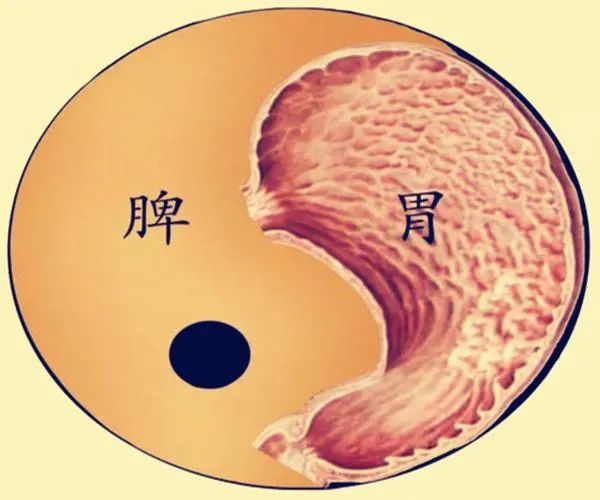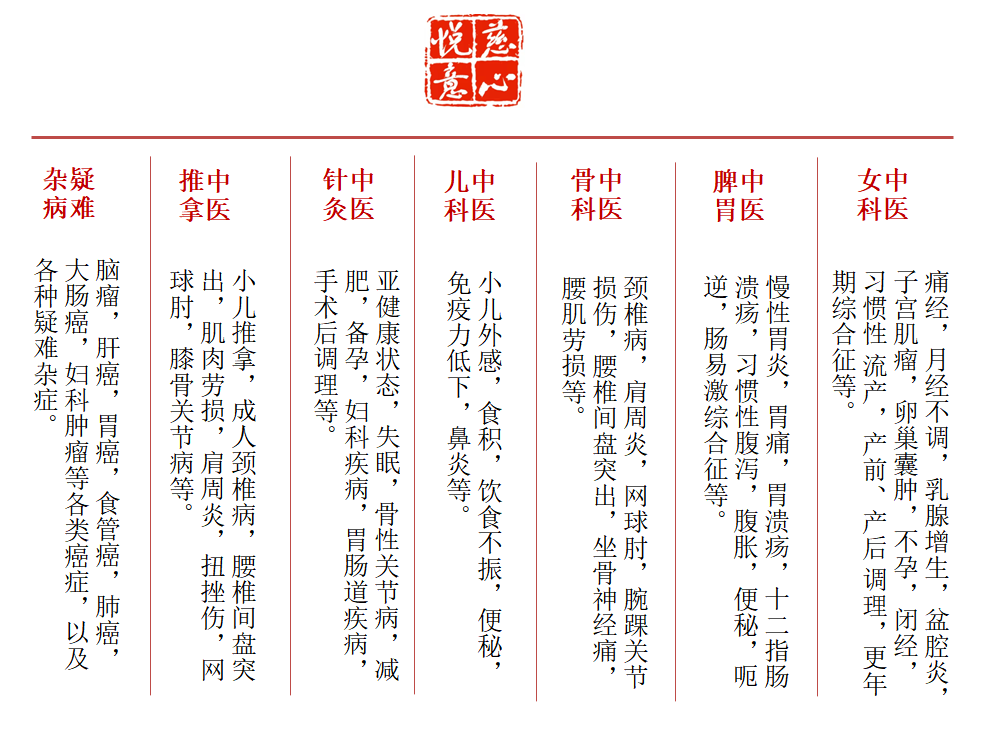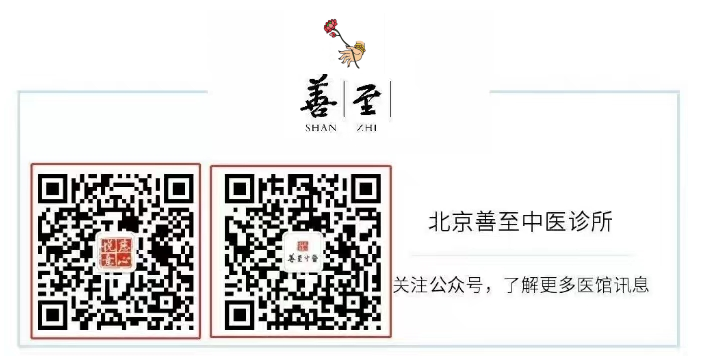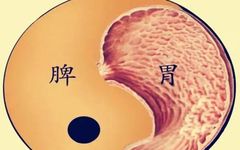
Before discussing specific issues, let us first talk about the rise and fall of the Qi mechanism in the spleen and stomach.
“The rise and fall of the spleen and stomach is the pivot of the body’s Qi mechanism, maintaining the normal function of other organs.”
The spleen governs transformation and transportation, while the stomach is responsible for receiving and digesting; the spleen ascends the clear, while the stomach descends the turbid; the spleen is the Yin earth, preferring dryness and disliking dampness, while the stomach is the Yang earth, preferring moisture and disliking dryness.
“The cooperation of the spleen and stomach in receiving and transporting is the ‘granary’, where the rise and fall are interdependent to ascend the clear and descend the turbid, both being the source of Qi and blood transformation in the body; the rise and fall of the spleen and stomach is the key to the rise and fall of the body’s Qi mechanism, with dryness and dampness working together to accomplish the function of receiving and transporting.”
“Spleen diseases are often due to deficiency,” with deficiency in the spleen often resulting from congenital insufficiency, postnatal malnutrition, or overthinking and fatigue damaging the spleen, clinically presenting as spleen Qi deficiency or spleen Yang deficiency; if the transformation and transportation are disordered, water, dampness, phlegm, and fluids may accumulate, leading to excess conditions of the spleen. Common symptoms of spleen diseases include abdominal distension, loose stools, poor appetite, edema, and bleeding.
“Stomach diseases are often due to excess,” with excess in stomach diseases often caused by irregular diet, obstruction in receiving and digesting, or disharmony of stomach Qi, clinically presenting as stomach cold, stomach heat, or stomach stagnation; if pathogenic factors damage Qi and blood Yin and Yang over time, stomach deficiency may be observed. Common symptoms of stomach diseases include stomach pain, vomiting, hiccups, and belching.
Identifying the Imbalance of Cold and Heat in the Spleen and Stomach
Spleen Cold Syndrome
Generally, spleen cold syndrome is considered to be due to deficiency cold in the spleen, arising from within; while excess cold in the stomach often comes from external sources.
Although the spleen and stomach are closely related, due to their different functions and characteristics, the location of deficiency and excess in spleen and stomach cold syndromes differs, and clinical manifestations are not entirely the same.
“Spleen Yang Deficiency Cold Syndrome” refers to spleen Yang deficiency, often developing from spleen Qi deficiency, or kidney Yang deficiency, where fire does not warm the earth, with symptoms of abdominal distension, loose stools, and cold limbs being key diagnostic points;
“Spleen Excess Cold Syndrome” often refers to cold dampness obstructing the spleen, with key diagnostic points being loose stools, heavy limbs, or yellowish skin, and edema;
“Stomach Excess Cold Syndrome” is often caused by external cold pathogens or cold from food obstructing the stomach, with key diagnostic points being cold pain in the stomach area, nausea and vomiting, and a gurgling sound in the stomach;
“Stomach Yang Deficiency Cold Syndrome” refers to stomach Yang deficiency, often developing from stomach excess cold, with key diagnostic points being stomach pain relieved by warmth, reduced appetite, and vomiting clear fluids.
Spleen Cold and Stomach Heat
Individuals with a constitution of Yang deficiency may crave spicy foods;
or if there is a pre-existing spleen and stomach cold syndrome, using too many warming and drying herbs, or using herbs that raise stomach fire when warming spleen Yang is needed, may lead to unresolved spleen cold while damaging stomach fluids;
or if there is excessive stomach heat, using too many spicy, sweet, cold, and cooling herbs may still leave stomach heat present, while cooling may stagnate the spleen, leading to a mixed syndrome of spleen cold and stomach heat.
“Spleen Cold and Stomach Heat Syndrome” presents with symptoms of dull abdominal pain, preference for warmth and pressure, nausea with a desire to vomit, or occasional vomiting, chest heat, pale yellow complexion, poor appetite, dry mouth with little thirst, aversion to cold drinks, halitosis, and thin, watery stools, with a pale tongue, thin yellow coating, and a soft or weak pulse.
Generally speaking, in cases of mixed cold and heat in the spleen and stomach, the clinical manifestations of stomach heat often obscure those of spleen cold, such as abdominal pain and distension, although there may be dry mouth and bitter taste, burning sensation in the stomach area, red tongue with yellow coating, etc., cold aversion in the abdomen, preference for warm drinks, or thirst with discomfort from cold drinks, or bowel sounds with diarrhea, requiring careful differentiation in clinical practice.
It is also important to note that mixed cold and heat in the spleen and stomach should be differentiated from true cold and false heat, and true heat and false cold syndromes.
Liver Heat and Spleen Cold
The liver and spleen work together in functional activities, regulating the Qi mechanism throughout the body, transforming food, and generating Qi and blood.
The wood relies on the earth for nourishment; when the earth receives the wood, it can be unblocked. The liver is strong and governs the dispersing and draining functions, but it can only achieve this when nourished by the Qi and blood of the spleen; while the spleen governs the transformation of food essence, it must rely on the liver’s ability to disperse and regulate to function normally.
The two are interdependent and mutually restrictive, often influencing each other and causing disease.
The basic pathological changes in liver-spleen disharmony include liver Qi stagnation, wood not dispersing earth, and spleen deficiency with damp stagnation, leading to various transformations based on “liver stagnation” and “spleen deficiency”.
Liver stagnation is considered excess, while spleen deficiency is considered deficiency, but due to the transformation of pathogenic mechanisms and different emphases, liver stagnation can often transform into fire, forming a syndrome of excess heat in the liver, while spleen Qi deficiency and disordered transformation can lead to internal obstruction of dampness, resulting in a mixed syndrome of liver heat and spleen cold.
“Liver Heat and Spleen Cold Syndrome” presents with symptoms of abdominal pain that occurs intermittently, irritability, vomiting, occasional expulsion of roundworms, cold extremities, and may also present with chronic diarrhea, loss of appetite, thin stools or constipation, pale red tongue, white moist coating, and wiry or deep pulse.
Stomach Heat and Intestinal Cold, and Stomach Cold and Intestinal Heat
The “Lingshu: Master Transmission” first discusses the mixed cold and heat of the stomach and intestines, stating: “Heat in the stomach leads to the digestion of grains, causing a feeling of anxiety and hunger, with heat above the navel; heat in the intestines leads to yellow stools like porridge, with cold below the navel. Cold in the stomach leads to abdominal distension, while cold in the intestines leads to bowel sounds and diarrhea. Cold in the stomach and heat in the intestines leads to distension and diarrhea, while heat in the stomach and cold in the intestines leads to hunger and abdominal pain and distension.”
It can be seen that “Stomach Heat and Intestinal Cold Syndrome” is primarily characterized by good appetite and anxiety, with abdominal distension or diarrhea.
When there is heat in the stomach, it leads to good appetite and anxiety; Zhang Jiebin’s “Classified Treatise: On Treatment” explains that “anxiety” refers to “stomach fire rising, causing the heart blood to be scorched and causing restlessness,” indicating that the stomach is in a state of turmoil.
The “Suwen: On Pain” states: “Cold qi invades the small intestine, preventing it from forming a mass, leading to diarrhea and abdominal pain.” Therefore, cold in the intestines leads to stagnation of Qi and blood, resulting in diarrhea and abdominal pain. This syndrome belongs to mixed cold and heat in the stomach and intestines, with heat above and cold below, and treatment should focus on clearing the stomach and warming the intestines, adjusting the cold and heat.
“Stomach Cold and Intestinal Heat Syndrome” is primarily characterized by abdominal fullness, lack of appetite, and yellow, watery diarrhea. Cold in the stomach leads to stagnation of Qi, resulting in difficulty in transformation, hence abdominal fullness and lack of appetite; the “Suwen: On the True Essentials” states: “Murky water and fluids belong to heat.” When pathogenic heat lingers in the intestines, food and fluids do not gather, leading to diarrhea with yellow, watery stools.
Conclusion
The pathogenesis of the imbalance of cold and heat in the spleen and stomach is complex and variable, involving multiple organs, with clinical manifestations showing mixed cold and heat transformations, and the mutual influence of the spleen and stomach making differentiation difficult and treatment challenging.
Therefore, based on the physiological differences of the spleen and stomach, starting from the pathogenesis of cold and heat in the spleen and stomach, systematically sorting out the pathological changes of the spleen, stomach, cold, and heat, analyzing the causes and mechanisms of mixed cold and heat in the spleen cold and stomach heat, and differentiating the mixed cold and heat syndromes of the spleen and stomach from other organ systems, it is proposed that the treatment of the imbalance of cold and heat in the spleen and stomach should focus on balancing cold and heat (drying dampness), treating the spleen and stomach together while also addressing them separately, clarifying the causes, mechanisms, symptoms, and treatment of spleen and stomach cold and heat syndromes.
◎ Some images and texts are sourced from the internet, copyright belongs to the original authors. Due to individual differences, the content is for reference only; if needed, please consult a professional doctor in a timely manner. If there are any inaccuracies, please contact us promptly, and we will address them as soon as possible. Thank you!
Shan Zhi Traditional Chinese Medicine



